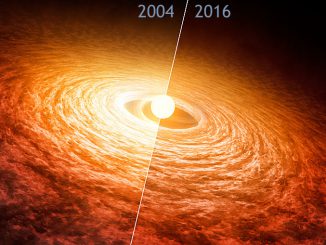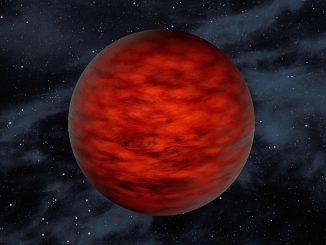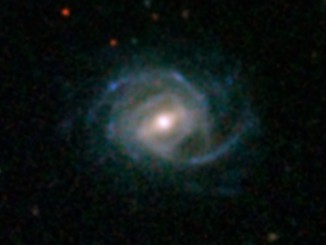
Gluttonous young star may hold clues to planet formation
In 1936, infant star FU Orionis began gobbling material from its surrounding disc of gas and dust with a sudden voraciousness, eating the equivalent of 18 Jupiters in the last 80 years. During a three-month binge, as matter turned into energy, the star became 100 times brighter, heating the disc around it to temperatures of up to 6,650 °C.


